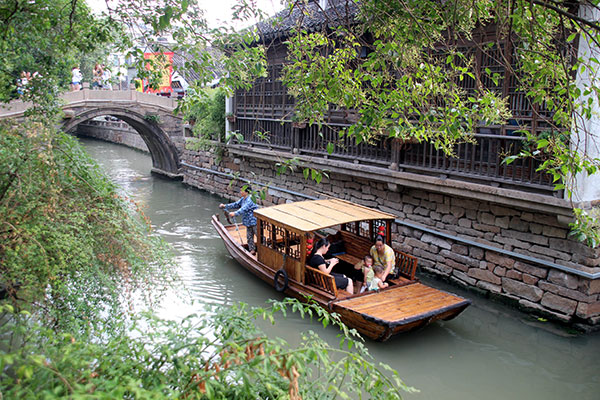Answer to poverty for many may be found in tourism
 |
|
The China National Tourism Administration released a report on Thursday showing that more than 2.64 million people escaped poverty by developing tourism-related incomes in 2015. It has become a significant channel for reducing poverty.[Photo by Wang Jiankang/Asianewsphoto] |
Zhou Shulin, a resident of Xinhua village in Chongqing, once migrated to cities to make a living. It was a common practice among his peers: It was hard to make a living through farming.
"As migrant workers, my wife and I could earn 50,000 to 60,000 yuan ($7,500 to $9,000) every year. After living expenses, we only had 20,000 to 30,000 yuan," said Zhou.
Working outside one's hometown can bring problems: unattended elderly parents and left-behind children without proper parenting, for example. When Zhou was advised to stay at home and earn a living from tourists, he was more than happy to try it.
Now, Zhou's family earns as much as 80,000 yuan per month.
"Five years ago, local residents were eager to leave. Now they are eager to come back," said Chuan Wenming, director of a tourism cooperative in Chongqing. "The tourism industry is developing very fast and is inducing migrant workers to start their own businesses at home. Now, they can be a hotel manager, waitress, cook or even a dance performer."
The China National Tourism Administration released a report on Thursday showing that more than 2.64 million people escaped poverty by developing tourism-related incomes in 2015. It has become a significant channel for reducing poverty.
The administration said it would attempt to lift 4 million people out of poverty by 2018 through the tourism industry, and another 3.47 million by 2020.
About 15 percent of Chinese mainland farmers are expected to benefit from village tourism by 2020.
Li Jinzao, director of the administration, said tourism can help develop the economy and protect the ecosystem at the same time.
"The key issue is to find the poverty-stricken villages that have tourism potential. We can't copy the model in all poverty areas," Li said.
"Different regions have their own characteristics. For example, Tibet and Xinjiang could design unique travel experiences around herdsmen."
Wang Zehua in Zhangjiakou contributed to this story.
- Shanxi invests in rural highways to boost tourism
- Tibet to host third international tourism, culture expo
- Tourism watchdog: scenic spot rating system to remain
- Beishan Ice-Snow Tourism World
- Dark clouds over tourism 'dissipating'Industry experts see stronger yen and regional
- Small city booms its economy through tourism














